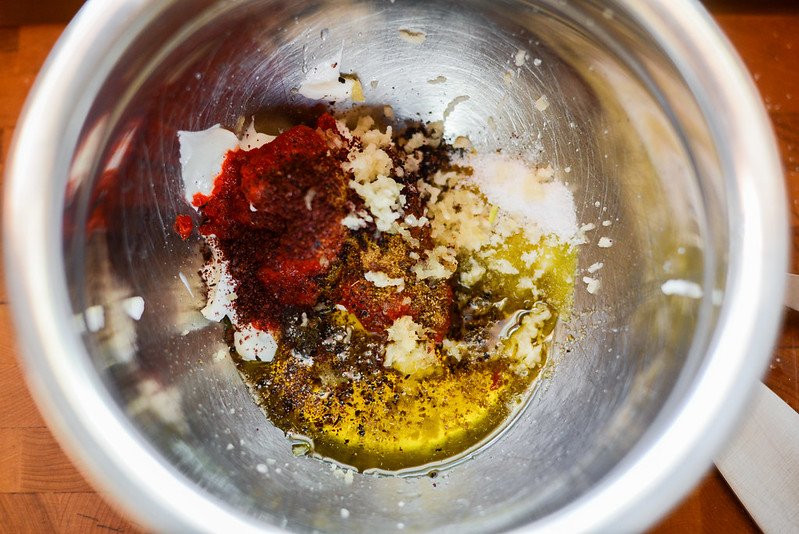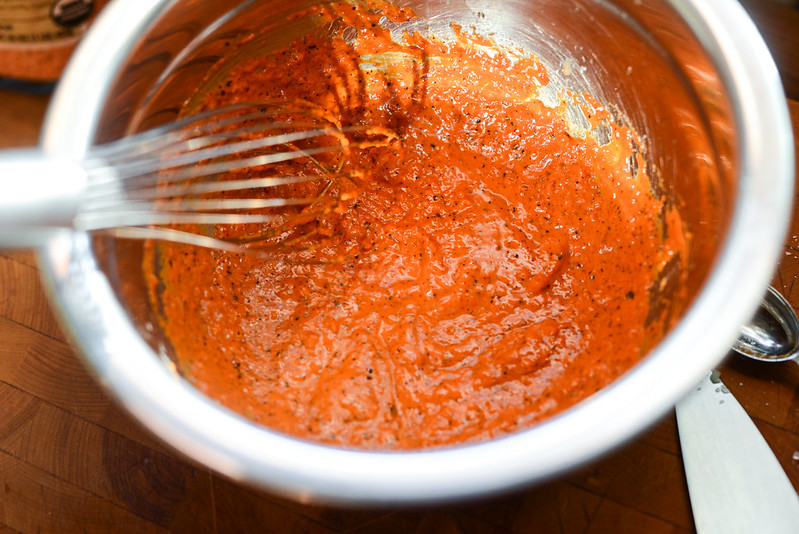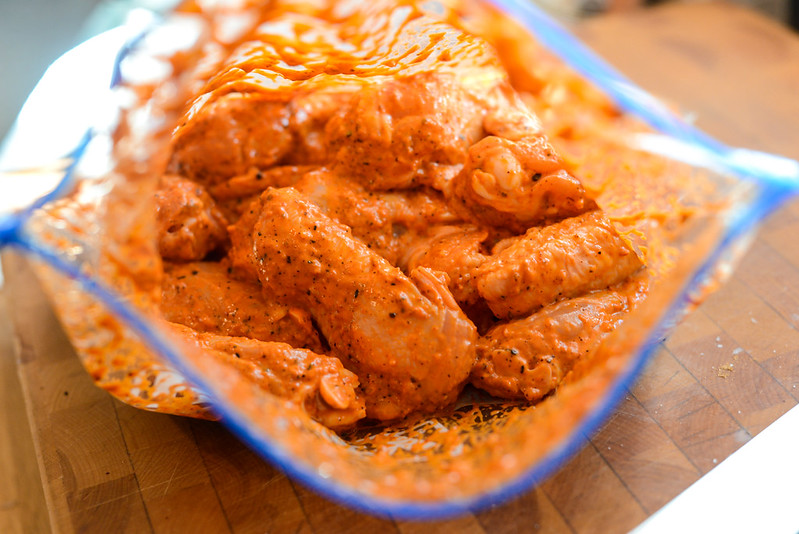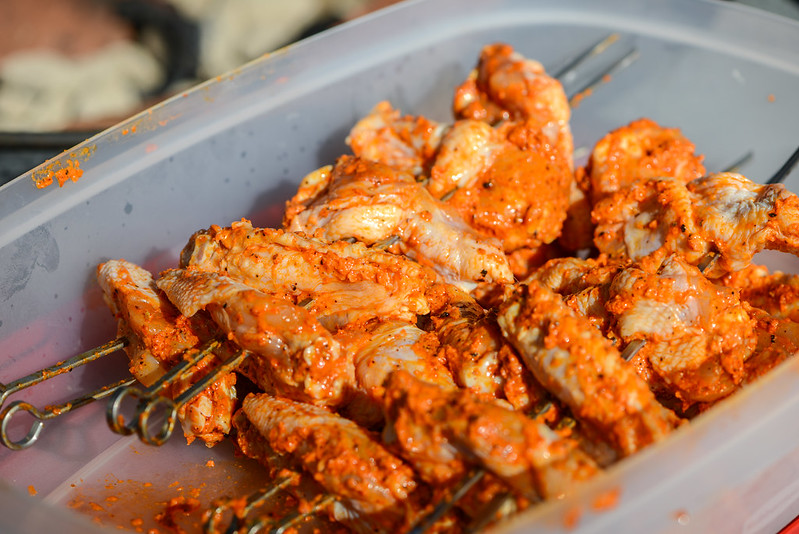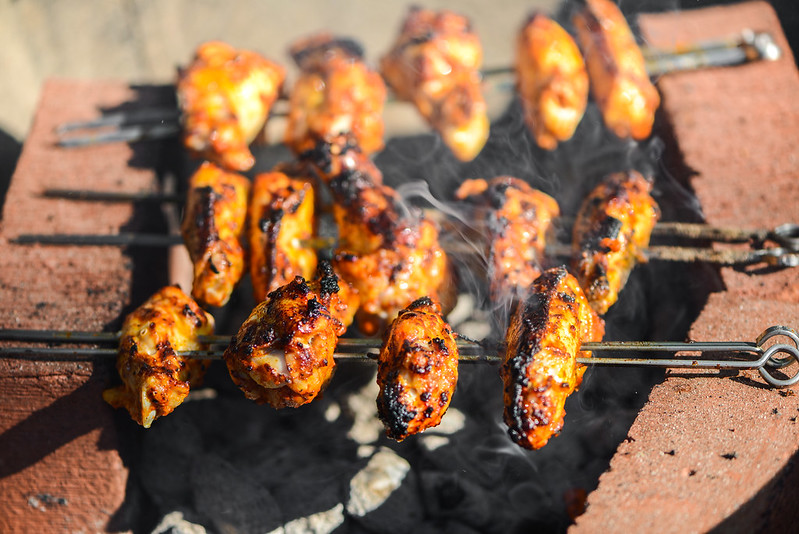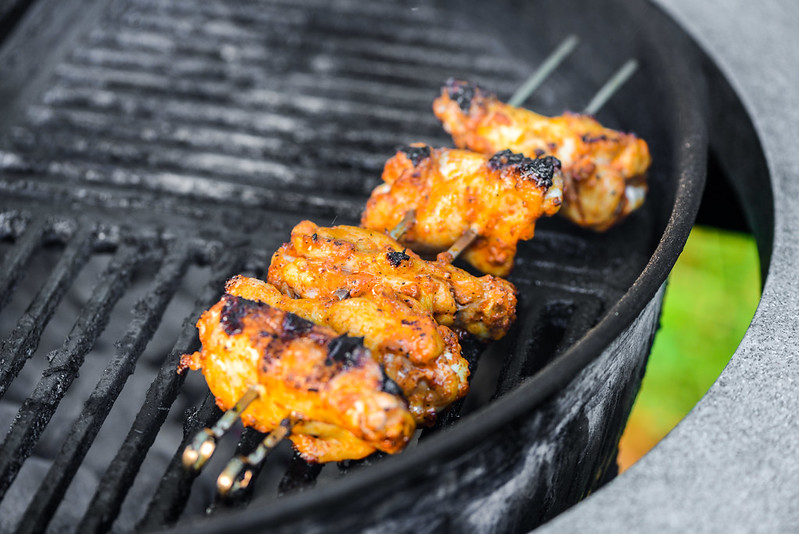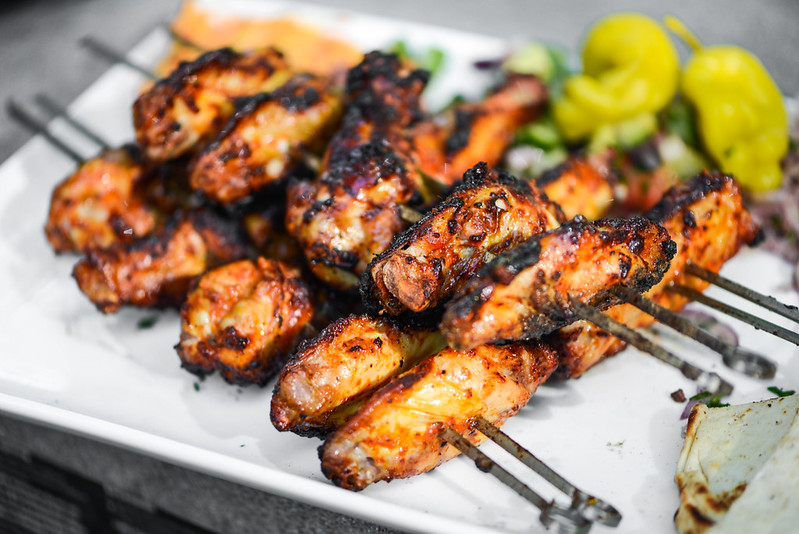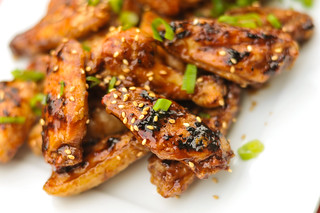Kanat (Turkish Chicken Wings)
For a man who loves wings, I'm grateful to have a base recipe that has given my consistently excellent results on the grill. Since finding that method—which involves coating the wings with baking powder and letting them air dry overnight to achieve crackling skin—my focus has been solely on variations in flavor, of which, the possibilities are endless. Even though each new recipe has had its own distinct end result, I feel a bit like a broken record, writing essentially about the same procedure post after post. That left me considering how I could possibly change things up a bit without sacrificing the quality my tried and true method affords. I found this in a Turkish take on wings—Kanat—that were worlds different in method and flavor, but just as incredibly awesome.
I have to start out by professing that I know little of kanat and my knowledge of them has come solely from stumbling across these skewered wings on a blog and then delving a little deeper into internet and cookbook research. So while I strived to create something that may resemble actual Kanat, I was guessing at best, and can't say this recipe is entirely authentic.
I do think I did pretty damn good job creating a marinade that tasted uniquely Turkish though. I achieved this by hunting out some ubiquitous Turkish ingredients that made all the difference. These included biber salcasi (a Turkish hot red pepper paste), sumac (a spice with an almost lemon-y flavor), and Urfa biber (smoky and slightly sweet pepper flakes). I mixed these three ingredients together along with extra virgin olive oil, Greek yogurt, garlic, cumin, and salt to make the marinade, which was so delicious that I whipped up a second batch to use a dipping sauce for pita and various kebabs I was also making that weekend.
I then placed my wings in a large Ziploc bag and poured in the marinade. Since, by rule of thumb, I no longer marinate my wings because the added moisture will pretty much ensure a flabby skin, this felt a little off to me. Still I wasn't making my average wing, so was equally excited to see how these would turn out as well as a bit worried that I was going down a path that I knew might lead to less than stellar results.
The shimmer of hope came in the fact that these were cooked in an entirely different manner. Rather than let the wings roast of a hot indirect fire for a long time, kanat are skewered and cooked very quickly close to the coals.
As I started to skewer my wings in preparation for grilling, I noticed they didn't quite stay put on their sticks. This required me to double up on the skewers to keep them totally secure.
To get the wings to cook as close to the fire as possible, I had to forgo the normal grilling grate and instead nested a few bricks on the charcoal grate and poured the coals in a single layer between them. I then rested the ends of the skewers on the bricks and watched the wings quickly start to cook and char. While I'm used to wings taking a good 45 minutes to cook, these were done in around 12-15 minutes—any longer and I would have risked burning them to a crisp.
If you don't have some bricks or easy way to set-up your cook space in this manner, the wings can placed on the grilling grate as normal, directly over the coals. Since the wings are much further from the fire though, the cooking time just needs to be adjusted to be longer—it's best to go by looks and when the wings have decent charred crispy bits all over, they should be done.
As I expected, these weren't the ultra crisp, crackling wings I've been used to making for years now, but that doesn't mean they were the sad soggy skinned chicken I try to avoid either. They actually had some nice crunch to them that came by way of the intensely charred bits that resulted from cooking them so close to the fire. Whatever they lacked in my eyes as the ideal texture, they surely made up for, and them some, in flavor. These wings had a deep, layered complexity that was unlike anything I've ever cooked before. They had a pleasing heat with undercurrents of sweet, smoky, and tangy that was wholly unique and characteristically Turkish. They certainly made me happy I decided to try something different, and have only left me thinking of more types of wings I could make in this manner.
You Might Also Like
Comments
-
Mo Irani I love Turkish food and more love great Turkish people, had pleasure to live in Antalya for a year and wishing to go back to this wonderful country when covid situation permits. Long lives The Great nations of Turkey and Iran. 🌹 🌹 🌹 🌹 🌹 🌹 🌹
-
Saliha Anwar Hi how do I cook them in the oven or pan please

